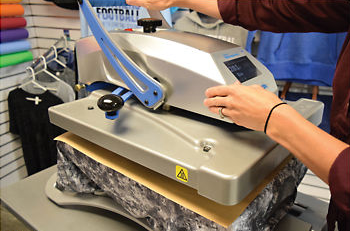Blank apparel is no longer literally blank apparel. Patterned garments, such as camouflage, plaid and hex designs, are becoming more and more popular in the blank apparel marketplace. However, there can be challenges to using these eye-catching garments. Here are five steps that will set you up for success:

1. Check the Fabric – Although patterned shirts are manufactured in both cotton and polyester, polyester is the most popular – and therein lies the challenge. Common issues when printing on polyester include dye migration and puckering. Closely examine the print method being used and use caution during the application process.
2. Choose the Correct Heat Transfer – Because dye migration is a typical problem when decorating polyester, use a heat transfer that has dye-blocking properties.

3. Drop the Temperature – Patterned apparel can be damaged because of high heat, especially items made of polyester, rayon or viscose. Use a dye-blocking heat transfer that applies at a lower temperature – below 300 degrees.
4. Do a Test Print – Once you’ve loaded the item on the heat press platen, do a test print for dye migration issues using a heat transfer sample. Let the item sit for 24-hours then inspect it. You can also test for dye migration by covering the item with a cover sheet then heat press for 10 seconds. If the dye is unstable, you’ll find an ink residue on the cover sheet.

5. Apply Heat – Using a low temperature setting along with a dye-blocking heat transfer, you’re ready to heat press. Use a cover sheet to protect your heat press from garment dyes.
Click here to read the full article featured in the January 2018 issue of Wearables magazine.

